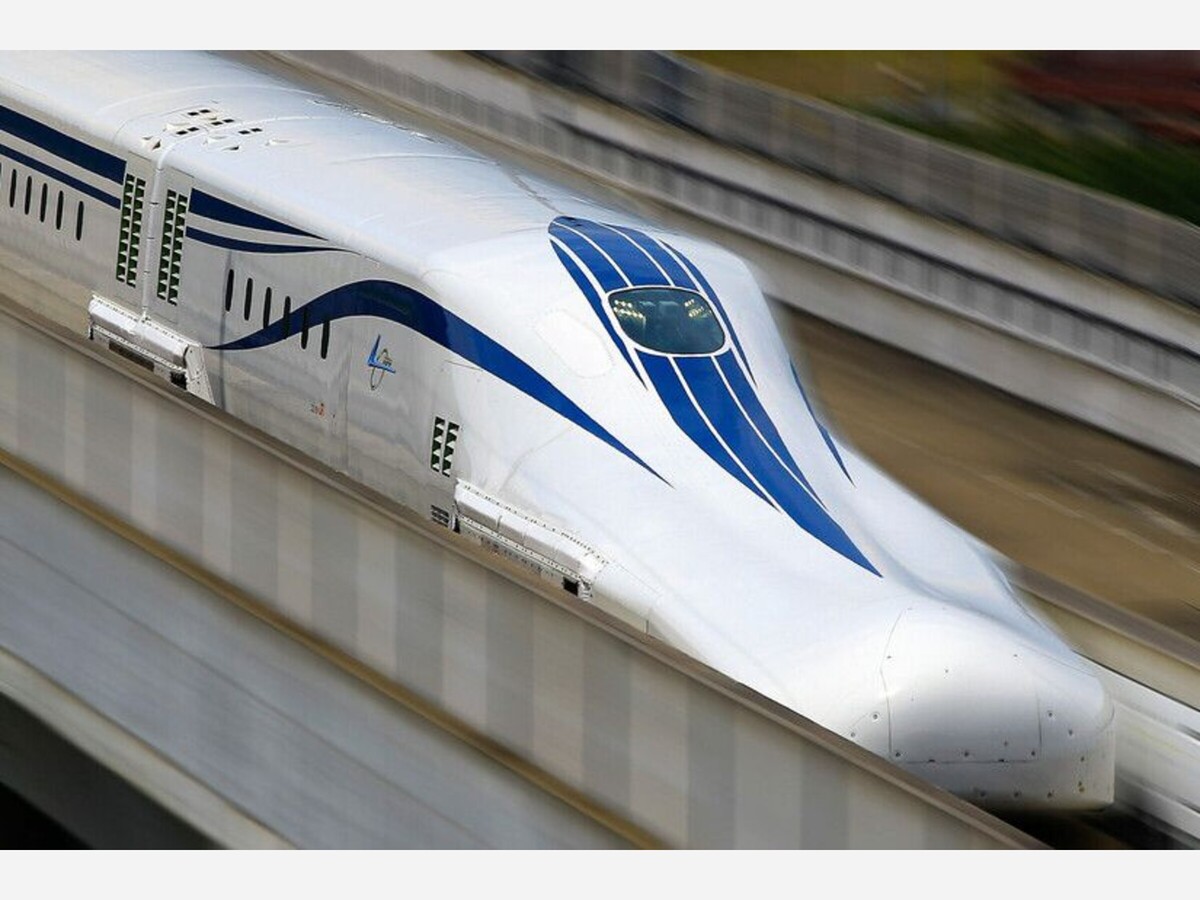Image

Maryland’s high-speed maglev train project is not happening
Federal Railroad Administration letter says the project ‘will result in significant, unresolvable impacts to federal agencies and federal property’

Gov. Wes Moore (D) watches a passing high-speed maglev train on April 12, 2025, during a trade mission to Japan. Moore supported the plan to operate a high-speed train between Baltimore and Washington, D.C. (Photo by Ken Katsurayama/Governor's Office)
No high-speed train will be zooming through parts of Maryland, after the concept was rejected by the federal government.
The Federal Railroad Administration has determined the potential multibillion-dollar investment to construct the proposed Baltimore-Washington Superconducting Magnetic Levitation rail line, known as maglev, “is no longer feasible.”
An upcoming notice in the Federal Register, scheduled to be published Monday, highlights a few of the federal properties along the route between Washington, D.C., and Baltimore that would have been affected, such as Fort George G. Meade in Anne Arundel County.
“Following extensive consultation with these agencies, the railroad administration determined the direct effects would have substantial negative effects to agency operations or to important resources managed by federal agencies,” according to the notice. “In addition, indirect effects would also significantly impair critical infrastructure and operations and ongoing agency missions.”
The decision does not preclude future deployment of maglev technology in the U.S., according to the notice, but it said the Baltimore-Washington project was not the one to carry it forward. The U.S. Department of Transportation has estimated the capital cost to build the project at nearly $20 billion.
“We want big, beautiful projects worthy of taxpayer dollars — including high-speed rail,” U.S. Transportation Secretary Sean P. Duffy said in a statement Friday. “This project lacked everything needed to be a success from planning to execution. This project did not have the means to go the distance, and I can’t in good conscience keep taxpayers on the hook for it.”
Opponents, like Prince George’s County resident Susan McCutchen, were ecstatic with the decision.
“It’s a huge deal and it feels a bit overwhelming, almost to the point that you can’t quite believe it,” she said Friday. “We’re optimistic, but we’re keeping an eye out still.”
That cautious optimism surfaced after a letter was circulated late Thursday night from Drew Feeley, acting administrator for the Federal Railroad Administration.
Feeley’s letter to Maryland Department of Transportation Secretary Paul Wiedefeld, whose last day on the job was Thursday, called on MDOT to take action to close out the project and that the FRA would rescind a 2016 notice of intent to prepare an environmental impact statement on the project.
“Since the award was obligated in 2016, the environmental review process has been paused twice on the Federal Permitting Dashboard. It remains on pause today, where it has been since August 24, 2021,” Feeley wrote Thursday. “Given the substantial delay and cost overruns associated with the Project, FRA does not see a viable path to continue investment in the Project.”
Wiedefeld responded in a letter Thursday that the state will comply with the administration’s request to submit final reports to terminate and close out a cooperative agreement on the project. The railroad administration first awarded the state Department of Transportation $27 million in 2016 for preliminary engineering and environmental review.
“MDOT understands that FRA’s decision reflects the significant challenges posed by the project, including substantial impacts to federal agencies and federal properties,” Wiedefeld wrote. “MDOT appreciates FRA’s partnership in advancing rail infrastructure and safety improvements in the State of Maryland.”
One major supporter of the project was Gov. Wes Moore (D), who watched a high-speed maglev train in April during a trade mission to Japan.
Moore spokesperson Carter Elliott IV said in a statement: “In order for this to be Maryland’s decade we must continue to investigate innovative technologies that better connect people from where they live to where they work. Although this project had challenges that were insurmountable, we look forward to working with FRA to advance transportation solutions that improve the safety, reliability, and efficacy of our transportation system.”
Baltimore Washington Rapid Rail is the company that had been slated to develop the project labeled Northeast Maglev. It said the train would have connected Washington, D.C., to Baltimore in 15 minutes at a speed of 311 mile per hour; and a trip between Washington and New York in an hour.
The company said in a statement Friday afternoon the administration’s decision represents a “missed opportunity.”
“The SCMAGLEV would have resulted in over $6 billion in private investment, created more than 160,000 jobs, and replaced 16 million car trips,” the company said. “With cars being the largest source of pollution in Maryland, significant air quality benefits would have been realized. Instead, the Washington, DC metro area will remain number one in the country for the worst traffic, delays, and congestion.”
Besides the company highlighting private investments of nearly $158 million, Northeast Maglev received representation from two of the state’s biggest lobbying firms: Evans and Associates and Manis Canning and Associates, both based in Annapolis.
However, several state lawmakers have expressed displeasure with the project.
In 2023, Del. Nicole Williams (D-Prince George’s) and state Sens. Pamela Beidle (D-Anne Arundel) and Malcolm Augustine (D-Prince George’s) and then-state Sen. Paul Pinsky (D-Prince George’s) sponsored legislation to prohibit the use of state funds toward the maglev project. The legislation didn’t advance out of the respective committees.
Before Del. Ashanti Martinez (D-Prince George’s) was elected to the House of Delegates, he opposed the project back in 2017.
“This result is a culmination of years of advocacy,” Martinez said Friday. “To be here in 2025 and finally have a decision that speaks to what we’ve said the from start, and that this particular project for this particular community doesn’t work from the environmental impacts to the lack of economic development to the impacts of people’s homes. I’m just really appreciative that we can now put this train to bed.”